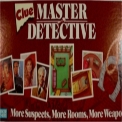Saturday, March 19: Mississippi Mud
CHAPTER AND VERSE
by John M. Floyd
My friend Carolyn Haines, one of the most talented and prolific mystery authors around, once said to me that when she started writing novels she tried to avoid short chapters. Her reason was that she’d always heard a writer should never give the reader an opportunity to put the book down. That’s sound advice, and at first glance, it would appear that the end of a chapter would be a perfect place for the reader to pause for a while — and maybe become the fish that gets away.
Well, chapter endings might well be a logical place to stop and take a break or mow the lawn or visit the bathroom or do the laundry . . . but if those endings are crafted the right way, they can accomplish just the opposite, and propel the reader forward through the story. One school of thought says the end of a chapter should do the same thing the end of a scene does: make the reader want to keep reading. And if he does put the book down (hey, when you gotta go, you gotta go), at least he’ll be eager to pick it up again when he gets back.
Planning and packaging
Some writers, like James Patterson, make almost all their chapters short. If I remember correctly, one of his books — The Jester — had less than 400 pages and more than 100 chapters. Some were only a page or two. But it moved fast; I read that entire book in jester few hours.
How exactly does that work? How do you keep the reader interested enough to keep going full-throttle past the stop-signs of chapter endings, and ignore things like hunger and bedtime and the calls of nature? In Patterson’s case, I think it’s several things. One is that he employs frequent POV shifts from one character to another (which can be risky in less competent hands), and a separate chapter is a good way to accomplish that. Another is that he often inserts “cliffhangers” at the end of those short chapters that make you want to find out what happens next. TV series do the same thing, at the end of an episode or just before a commercial break. The carrot that gets dangled in front of the reader/viewer doesn’t have to be anything extreme — it might be the emergence of some new plot complication, or the discovery of a needed piece of information. Or even just a hint that more information exists. (Maybe it’s the promise of an exit visa to get the hell out of Casablanca.) The only requirement is that it be something that makes further action inevitable. Especially if the genre is mystery/suspense. Yet another argument is that the end of a chapter is the best kind of dramatic pause, and when done well, pauses are a good way to add extra emphasis and impact to what’s just been said or done. And the more of those, the merrier.
This whole business of very short chapters is something I don’t remember seeing a lot until fairly recently. In olden days chapters occasionally rambled on for twenty pages or so, and some of James Michener’s went way longer than that. (He was a great novelist, but when you consider his history-lesson content and mostly dialogue-free, margin-to-margin text, I’m a little surprised that I did hang in there and finish so many of his books.) There are also plenty of other techniques that are now used more often than they used to be, like present-tense narratives and nonlinear storylines and switching from first- to third-person POV and back again — and when done correctly they all seem to work.
Refilling the suspense dispenser
I think the first time I noticed short chapters was while reading the Spenser series by Robert B. Parker, years ago. Harlan Coben also loves to use short chapters, and I believe it’s one of the reasons — along with frequent dialogue — that the novels of Coben and Parker and Patterson read so quickly. Shorter chapters, like shorter sentences and paragraphs, don’t function as the speedbumps they appear to be: they actually increase the pace of a novel. I would add that frequent scene breaks do that also, but in a novel with extremely short chapters there aren’t many scene breaks; the next scene is the next chapter. In the case of Elmore Leonard, who uses a great deal of that speedy dialogue, the chapters aren’t glaringly short but usually contain a lot of scene breaks, which (once again) helps hurry the story along.
I’m planning to do a column soon on the subject of pacing in fiction, and will cover all this in even more painful detail, but meanwhile, what do you think of the idea of short chapters? Does it bother you? Does it matter? Should chapter length be dictated by the storyline? By the genre? By the writer’s personal style?
Different houses, different rooms
I should probably mention here that Carolyn Haines still seems to use fairly long to medium-sized chapters, but she’s such a gifted writer it doesn’t matter one way or the other — I love her books and always will. Robert B. Parker, though, stayed on the short-chapter bandwagon throughout his career. I’m reading his novel Painted Ladies now, and he managed to fit 67 chapters into its less than 300 pages.
I suspect it’ll be as good as all the others.





















Nice column. Personally I dislike these excessively short chapters which eliminate tricky transitions but they do seem to be what the market wants. i suspect that they especially suit people who don’t really love reading as they put a primacy on action and tend to have shorter easier sentences.
Thanks for your thoughts, Janice. I agree that this appeals more to readers of fast-paced genre fiction. I do think it’s surprising how much more of it I’ve seen in recent years.
I lean toward short chapters, though I think it’s less ADD and more about squeezing quick reads in between other tasks.
The absolute mistress of tactical short chapters I’ve mentioned before, Lindsay Davis in her novel, One Virgin Too Many. A few chapters are (if I remember right) one or two sentences long.
Thanks for the shout-out, John. I’ve finally come to believe that the story dictates the chapter length. Some stories demand the shorter chapters, while other stories simply require a more expansive scene framework. But in another 20 years, I may have a totally different take on it all. The one thing about writing–I learn something new everyday.